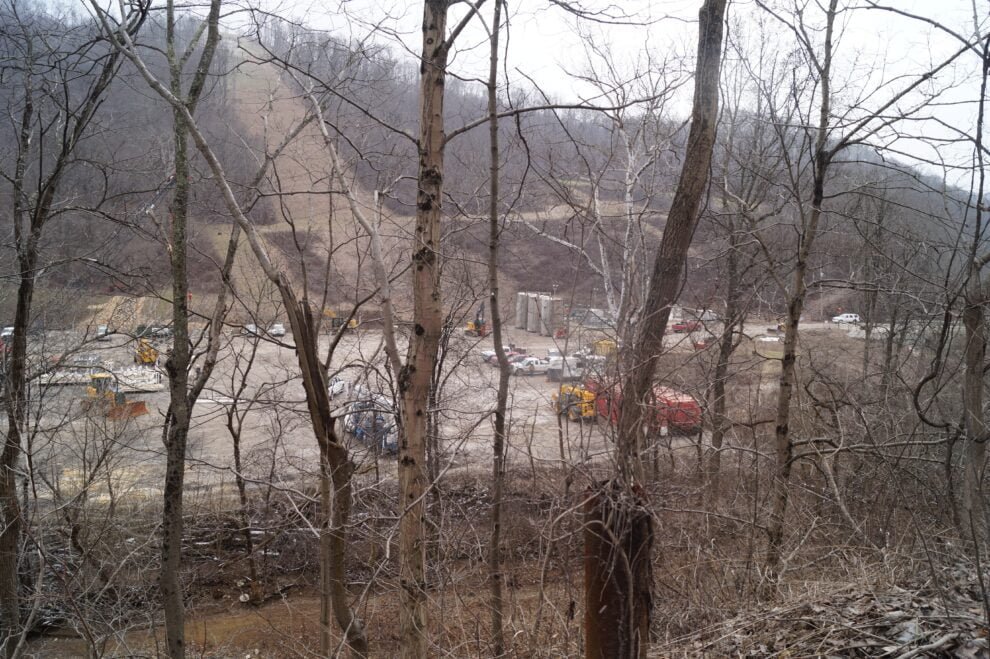A new study shows Appalachian regions counting on shale gas to replace losses from the steel industry are seeing discouraging results that researchers say show an unlikely future for the field.
The Ohio River Valley Institute, a Pennsylvania-based think tank, used U.S. Energy Information Administration data, along with natural gas output statistics to look at economic outcomes for 22 counties spanning Ohio, Pennsylvania and West Virginia. Those counties, the OVRI said, “are responsible for 90% of Appalachian gas production.”
Ohio counties included in the study of the region were Carroll, Jefferson, Harrison, Belmont, Guernsey, Noble and Monroe counties.
What the data showed was gas production that has “deteriorated” and job growth that has gone from “meager” gains in 2008 to “an absolute decline.”
“As measured by jobs, population and income, Appalachia’s principal shale gas producing counties have done worse economically than the region and the nation since the dawn of the Appalachian boom,” the ORVI report stated.
Challenges in pipeline construction to connect the region to areas where oil can be exported, along with a slowed increase in global demand for natural gas and even the war in Ukraine have contributed to the declines seen in the Ohio Valley, according to the OVRI.
Since 2008, the Appalachian region, called “Frackalachia” in the report, showed a 1.6% gain in employment, but those gains upturned into a 2.1% loss, amounting to more than 10,000 jobs eliminated.

With the loss of jobs came the loss of income and population. The region saw a 4.8% decline in 2021, even lower than the 3.8% decline reported in 2019.
“Taken together, these finding present a unique and troubling challenge to northern Appalachian policymakers and to all of us who care about the economic wellbeing of a place that has suffered mightily since the collapse of the steel industry in the 1980s,” report author Sean O’Leary, a senior researcher with the ORVI, wrote.
Researchers said the date demonstrates “a need for local and regional policy makers to explore new economic development strategies, particularly strategies associated with clean energy transition.”
The institute said the natural gas boom and industries like petrochemicals and plastics manufacturing which were supposed to thrive as a result “became saviors in the eyes of the region’s policymakers,” powered by “relentlessly sunny economic impact studies predicting the creation of hundreds of thousands of jobs.”
“This report, its predecessors and struggling downtowns in communities throughout Frackalachia provide overwhelming evidence that the predictions weren’t only wrong, they were the products of deeply flawed and biased analyses,” according to the OVRI report. “And, more importantly, the reasons why the natural gas boom and its offspring … failed to deliver on promises of economic prosperity are structural in nature, meaning they are not going to change.”

The main issue comes from an U.S. EIA 2023 “energy outlook,” which found Appalachian natural gas production “likely peaked in 2022,” the ORVI said in citing the outlook.
EIA researchers found in the same report that the peak production “will not be equalled again until 2045,” while gas production in other parts of the country could surpass Appalachia by 2050.
Though in the short-term that forecast might turn out to be wrote, the institute said “the long-term trend is clear.”
“Production is leveling off,” researchers stated as part of their analysis. “Indeed, data show that Appalachian production began to plateau as early as 2019.”
The report concluded that policymakers should be more realistic “about what these industries do and do not offer in the way of economic development” as energy development goes forward.
“It is a test of whether fact can ultimately triumph over wishful thinking and the not inconsiderable inducements self-interested industries are willing to offer in order to insure that delusion carries the day,” according to the report.
Source: Ohio Capital Journal












